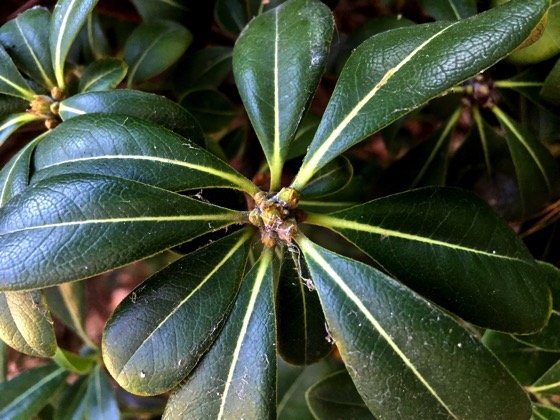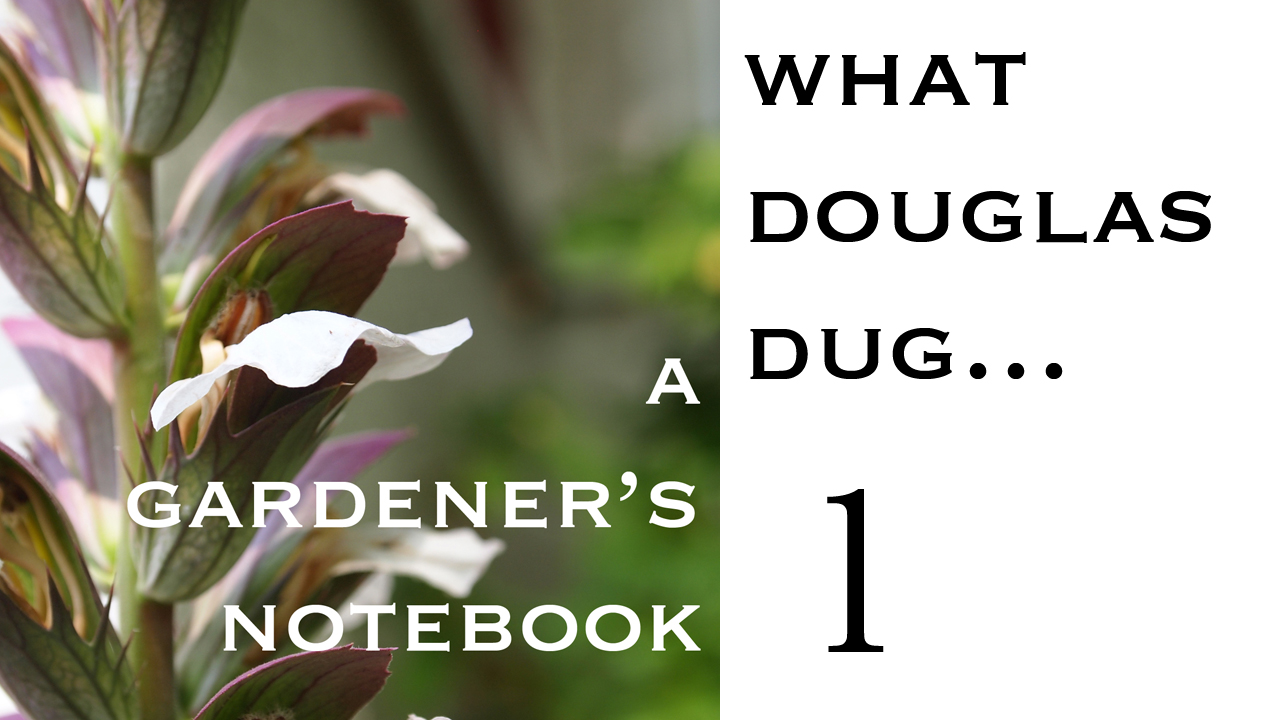In the natural world, flowers get all the attention and I have been guilty of perpetuating that bias here in my own blogs. That said, leaves are amazing, too, so in this series I will highlight the many forms of leaves available out there. — Douglas
Pittosporum

Pittosporum is a lovely, evergreen, plant used in many gardens, both simple and — in the case of Japanese gardens — quite complex. Its varieties range from small shrubs to large trees and some are quite fragrant. My own example, is one of the most carefree plants in my garden. It is happy to simply be there and grow without much attention, pruning or watering.
Pittosporum (/pᵻˈtɒspərəm/[1] or /ˌpɪtəˈspɔərəm, –toʊ–/[2][3]) is a genus of about 200 species of flowering plants in the family Pittosporaceae. The genus is probably Gondwanan in origin; its present range extends from Australasia, Oceania, eastern Asia and some parts of Africa. Citriobatus is usually included here, but might be a distinct (though closely related) genus. They are commonly known as pittosporums or, more ambiguously, “cheesewoods“.
The species are trees and shrubs growing to 2–30 m tall. The leaves are spirally arranged or whorled, simple, with an entire or waved (rarely lobed) margin. The flowers are produced singly or in umbels or corymbs, each flower with five sepals and five petals; they are often sweetly scented. The fruit is a woody seed capsule, which bursts on ripening to release the numerous seeds. The seeds are coated with a sticky resinous substance. The genus is named after their sticky seeds, from the Greek meaning “pitch-seed”. — Wikipedia
More information on Pittosporum:
- Pittosporum in Wikipedia
- Pittosporum on Gardening Know How
- Pittosporum on SF Gate
- Pittosporum Books and Plants on Amazon.com
- Pittosporum on eBay
Previously in Garden Leaves:


